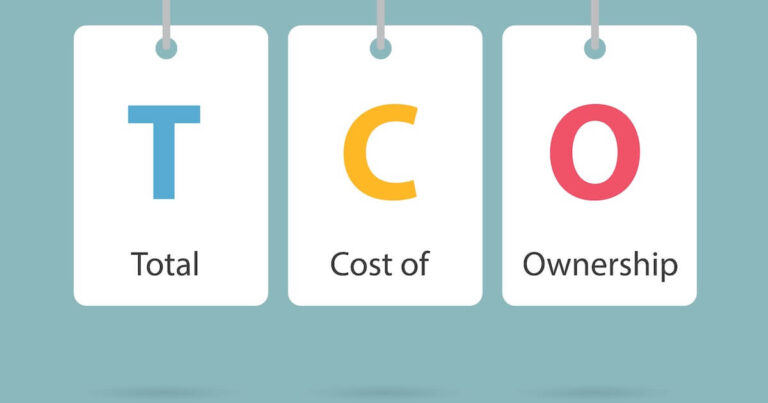Cloud computing is now emerging as the default choice for organizations for its many benefits, such as reduced costs, improved service quality, and increased flexibility. Organizations now understand cloud could help them respond quickly, recover faster, reimagine how they have been operating, and redefine their business continuity strategies to be competitive with their platforms, applications, and data.
However, several challenges and pitfalls to cloud adoption have consistently appeared across industries despite these benefits. Interestingly, the majority of these challenges are not with the core technologies that enable cloud computing. Instead, cloud computing tends to expose gaps in application architecture and an organization’s IT policies that together undermine core organizations’ cloud objectives and pitfalls of cloud adoption.
Common Pitfalls Of Cloud Adoption And Steps To Address Them
Adopting cloud for data, applications, and workloads requires a proactive approach and hours of analysis to ensure new environments and technologies go well with the on-premise architecture. Not taking these into consideration leads to several pitfalls, and organizations don’t experience expected outcomes from their cloud initiatives. This blog post discussed the common pitfalls of cloud adoption companies of all sizes and domains experience and appropriate steps that should be included in the strategy to address or avoid these pitfalls.
1. Unexpected Cost Increases
Cost optimization is the crucial factor organizations decide to move to the cloud. But many organizations experience an unexpected increase of cost in the bill from their cloud initiatives. Besides the initial thought that organizations will shift from capital expenditure to operational expenditure and save upfront cost, Statista says, “companies found unnoticed cloud costs that led to several thousands of dollars in revenue loss.”
The fact is cloud costs are not easy to estimate and are highly dependent on an organization’s starting point—and its ability to govern and optimize cloud consumption.
Migrating to the cloud is a time and resource-intensive process. It requires investment in technology such as network redesign, access management, and many others. Cloud cost also relies on the cloud model of a company selected for business workloads and apps, which comes with different features, benefits, and fees. Without fully understanding the value and cost of cloud models, companies shouldn’t embark on a cloud migration journey.
However, there are preventive measures available to avoid this cloud adoption pitfall, such as:
- Financial analysis
- Workload analysis
- Good governing processes
- Adopting cloud optimization tools
Using the cloud optimization tools provides you the capabilities you need to identify and right-sizing overprovisioned resources, take advantage of pricing changes, identify ways to use and release IT resources more cost-effectively and keep complete control over cloud expenses.
2. Vendor Lock-in
No company wants to find itself in a vendor lock-in situation. But this could be the case with many organizations struggling with technology lock-in and are not being able to leverage features and benefits other CSPs.
One other drawback of vendor lock-in is contract lock-in, in which organizations find themselves in situations of heavy penalties if they want to terminate services early. Organizations face these situations as the industry doesn’t yet have cloud standards and interoperability practices. Market consolidation can be yet another reason.
However, there are ways to reduce the risk of vendor lock-ins, including:
- Upgrading applications into containerized form
- Adopting open-source technologies and platforms
- Going with multi-tenant cloud platforms
- Relying on multi-cloud strategies
- Integrating cloud procurement tools and techniques
Using cloud procurement tools, you can streamline your procurement processes from a multi-vendor, evaluate your contract terms and negotiations, evaluate risk, check your invoices and get much more flexibility and security to support your cloud adoption strategy.
3. Data Security And Privacy
Opting for cloud computing means storing data on a shared infrastructure. This is a fundamental shift from traditional IT practices and the one reason companies worry about most. It is because when migrating to the cloud, companies cannot see the location of data being stored and processed, and also, they don’t have control over the hosting resources. Organizations have to fully rely on CSPs regarding data and infrastructure protection.
Multi-tenancy is just another reason organizations think most of the time as a threat could still occur since an attacker could obtain information through a shared tenant’s node.
Hence, organizations need to understand that going to the cloud doesn’t prevent data breaches, account hijacking, compromised authentication, hacked interfaces, and other security problems. But enforcing adequate safeguards and controls and raising cloud adoption awareness could.
Here are the following best practices should organizations adopt to avoid pitfalls related to data security and privacy:
- Implement strong data encryption and continuous monitoring control
- Adopt a DevSecOps operating model
- Developing an understanding of the cloud security and privacy operating model
- Developing a sense of shared responsibility throughout the organization
The question is not whether the cloud is more secure for your organization’s data and apps but what measures should be adopted to enhance cloud security postures and leverage all cloud advantages.
4. Compliance And Regulatory Risks
Cloud adoption also poses regulatory risks on organizations in some jurisdictions, for instance, the European Union’s GDPR law that requires businesses to protect the personal data and privacy of EU citizens for transactions that occur within EU member states. Not meeting compliance and regulatory requirements costs companies heavy fines.
There are many countries having similar rules. Unfortunately, IT teams do not always understand these implications. To them, their solutions aligned toward It efficiency. But the fact is their solutions could result in a significant breach of data protection.
Therefore, companies should develop the right processes to manage risk like these such as:
- IT teams must seek guidance from a corporate legal team before moving sensitive data or putting that data to a new use.
- Foster strong communication between IT teams and regulatory compliance experts to provide oversight and guidance based on changing market requirements.
5. Hybrid Cloud Integration
“Hybrid cloud integrates and unifies public cloud, private cloud, and on-premises infrastructure to create a single, flexible, cost-optimal IT infrastructure,” says IBM.
As a result of this amalgamation, companies leverage best-of-breed cloud services and functionality provided by multi-cloud vendors. It allows organizations to achieve their technical and business objectives more effectively and a faster go-to-market.
Hybrid cloud – particularly hybrid multi-cloud- emerged as default cloud computing solutions that businesses rely on acquisitions having different IT infrastructural setups.
This means taking advantage of the agility, scalability, and performance of cloud services while keeping on-premise systems for storage.
Not every company is well-versed in hybrid cloud adoption since hybrid IT environments are complex setups, new tools required to manage its environment, and new skills needed to architect, secure, and manage hybrid cloud solutions.
Some tools and processes could be used to overcome these pitfalls like:
- Structured cloud governance
- Enterprise cloud adoption guidelines
- Modernizing operating models and enterprise practices
Establishing structured governance and guidelines organization-wide allows you to successfully manage growing cloud and on-premise data and application integrations, help them with flexibility and enable them to meet the long-term vision.
Conclusion
The move to the cloud can enable and transform your business. On balance, the benefits generally outweigh the risks as long as you have a strategy in place to avoid foreseeable pitfalls. Cloud migration is a journey, not a one-time job; henceforth, everyone within an organization must take responsibility, including IT teams, application owners, security teams, legal teams, senior business leaders, and others, just as they do in the on-premise.
Read here, how Cloud Landing Zone supports smooth enterprise cloud migration.




